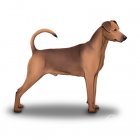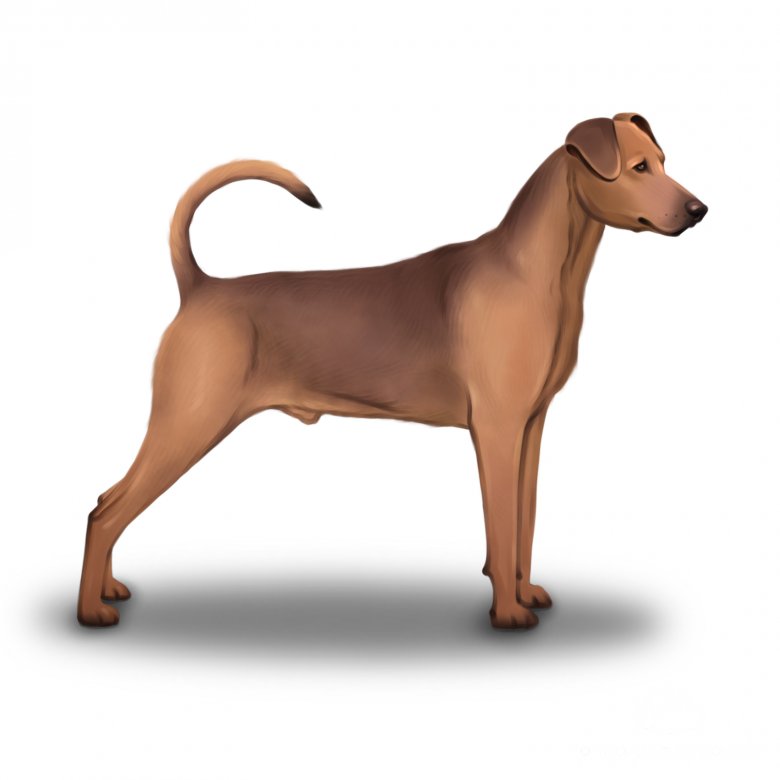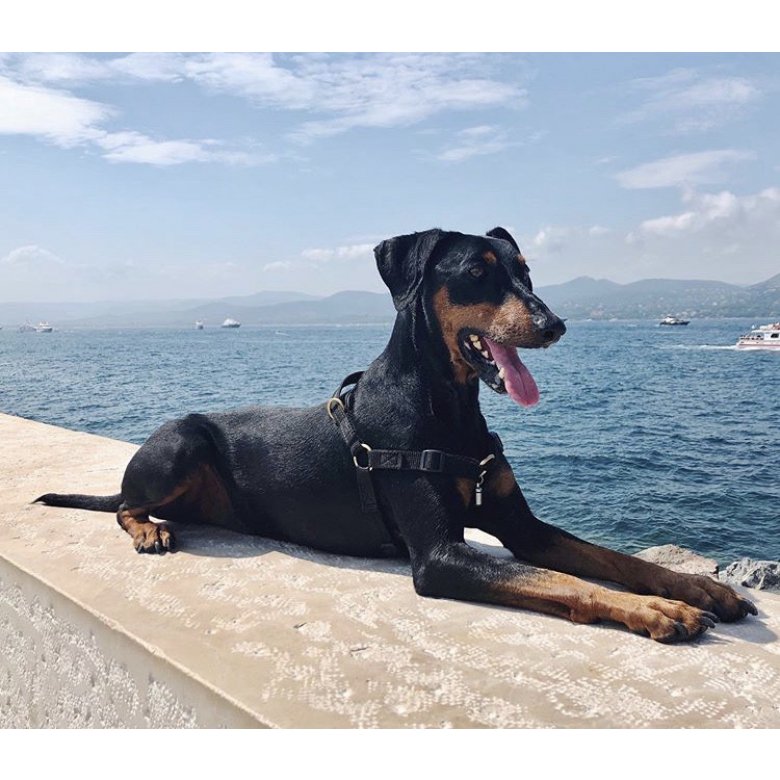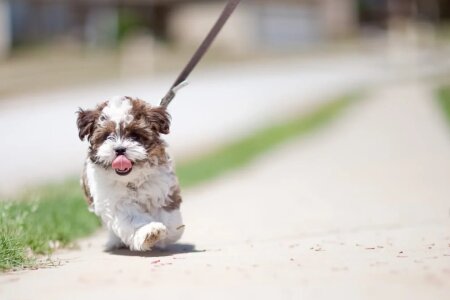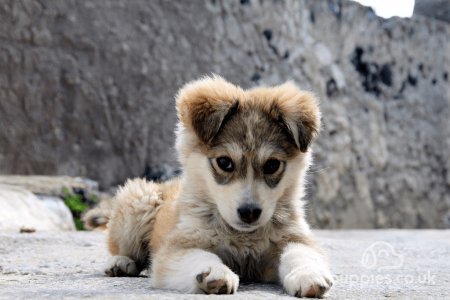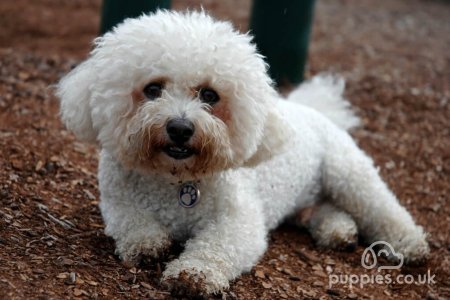Why German Pinschers are great
Muscular and agile, powerful yet graceful, the German Pinscher is a breed that fits as both a worker and a companion – a perfect all-rounder. They are extremely affectionate whilst also being used as a protective guard dog. Some highlights:
German Pinschers are very easy to groom, not shedding frequently
This breed is known for their appearance, their shiny and smooth coat being eye-catching and elegant to complement their muscular build
The German Pinscher is an extremely loyal breed, defending their territory and their family
Things to consider when looking at German Pinschers for Sale
Although German Pinschers are devoted family companions, there can be problems with children. If this breed is introduced early enough to them, they will be able to see them as part of their family. However, if a child was to reach for one of their toys that they are playing with, there may be some aggressive behaviours seen. Their breed instincts tell them to protect themselves in danger – bite first, think later. This breed is not recommended for families with children under the age of 9. Some downsides to the German Pinscher:
The German Pinscher is a very headstrong and clever breed, which can often make them manipulative. A firm but gentle approach is needed for them to be trained well, so an experienced owner is recommended
They also tend to be very high-spirited with a strong need to be kept occupied. Their low boredom tolerance causes them to be demanding and energetic, two traits that can often not be ideal for owners
German Pinschers also have a high prey drive, so small animals may be seen as objects to chase. Always keep an eye on their activity when being exercised outside in an open space
History of German Pinschers
The German Pinscher is a relatively new breed, first bred in the 19th century in Germany. Originally, they were bred to be ‘stable dogs’, catching and controlling vermin as well as protect and guard their environment. After the wars, they fell into a vulnerable state, nearly becoming extinct. Two colours of the breed did actually die out: Pure Black and Salt-and-Pepper variety. However, they were bred further due to their versatile personality, and are no longer classed as vulnerable. Traditionally, their tails were always docked, but since a new law in 2007 stating the illegality of docking tails, it is becoming more and more uncommon to see them this way. There are some exceptions being seen with individual working dogs, but even this must be authorised by a vet and all owners of the puppy.
Appearance
How big is the German Pinscher?
Typically, the German Pinscher grows up to about knee height on an average adult. The males of this breed grow to about 43 – 50cm, whilst females are usually about 40-45cm.
How heavy is a German Pinscher?
German Pinschers are usually about 11-20kg for both genders.
What Colour is the German Pinscher?
This breed has a variety of colours, including red, stag red – a mixture of red and black hairs – and Isabella, which is a light bay or fawn colour. They regularly have tan or red markings.
Temperament
Do German Pinschers make good guard dogs?
German Pinschers are very well known for their guard dog abilities, being instinctively standoffish with strangers as well as unfamiliar noises and sights.
Do German Pinschers bark a lot?
Although they don’t bark unnecessarily, the German Pinscher regularly lets out a loud and alerting bark when reacting to an unfamiliar sound or object. This reaction makes them a good guard dog.
Are German Pinschers easy to train?
German Pinschers are strong-willed and dominating, needing consistent and firm training from an owner that is not afraid to tell them who is the leader. This is important, as otherwise they will become stubborn and think that they can do whatever they want to.
Are German Pinschers playful?
Naturally, German Pinschers are playful, but they can also be somewhat aggressive when their toy is being taken when they don’t want it gone. However, early socialisation is very important to remove this possible aggression, and otherwise, they can be lovely and playful to all aged children. They are known to destroy their toys very quickly, so be sure to buy them more sturdy toys rather than soft, cuddly ones that can easily be torn apart.
Are German Pinschers good with other pets?
German Pinschers are naturally nervous around other dogs, however, early socialisation can help this in the future. They can often see smaller pets as being prey, wanting to chase them. If living with smaller pets, it is a good idea to introduce them as early on as possible so that they grow to know that they shouldn’t chase them.
Can I leave a German Pinscher Alone?
Although the German Pinscher doesn’t suffer from separation anxiety, they do not enjoy being left alone all day. Leaving them without sufficient mental stimulation and physical activity can lead to them being destructive.
Do German Pinschers like water?
This breed tends to enjoy running through and playing in shallow water but does not choose to go for a proper swim. This does not apply to all German Pinschers; however, this is most likely the behaviours that are seen.
Health
How long do German Pinschers live?
German Pinschers commonly live up to about 12 – 14 years.
How much exercise does a German Pinscher need?
This breed is very active and energetic, needing daily exercise including playing, running or walking. Two outings a day to an open secure area are advised to limit their boredom. Always supervise your German Pinscher when they are off the lead, as they can very quickly runoff and return only when they want.
What are German Pinschers Common health issues?
German Pinschers are a relatively healthy breed, but like all dogs, they can be prone to certain health conditions, including:
Care
How much space do I need for a German Pinscher?
Although German Pinschers are not the largest breed, they do require enough space for them to be comfortable and not feel invaded by others. They need their own space, otherwise, they may become slightly grumpy and unhappy. They also do not do well in apartments, needing a garden or backyard that they can entertain themselves in.
What should I feed my German Pinscher?
It is recommended that this breed gets about 1-2 cups of high-quality dry food twice a day. The amount they get is very dependent on their size, age, build, metabolism and activity level. Always check with your personal vet for their advice for your dog individually.
How much grooming do German Pinschers need?
German Pinschers have a shiny and smooth coat that is dense with no bald spots. They do not shed and therefore require minimal grooming. It is always advised that dogs get their coats brushed through every week to remove any dirt that may be stuck in order to keep them clean and looking shiny.
Average costs
How much does it cost to keep a German Pinscher?
As a rough guide in pricing: Cost to buy: roughly £500-£1,000 for a well-bred German Pinscher puppy Other costs (Vet, Food etc): £70-£100 per month
Specific Buying Guide
You can read our general buying guide here (/advice-on-buying-a-puppy/), with the most important thing being going to view your German Pinscher Puppy, seeing it with its mother, and checking the quality of the breeder. More specifically, here is some German Pinscher puppy buying advice:
German Pinschers love having a job. When they are stimulated both mentally and physically, they will be a happier and calmer dog for your family. It is advised that when you leave them alone, always leave them with a toy such as a Kong filled with treats that will help them work their brain. Owners need to be aware of how to deal with their German Pinscher whilst also be prepared to exercise them regularly, more than once in a day.
Crate training is also advised for this breed, especially at a young age. This will help them get used to confinement If they every need to be hospitalised or put into kennels. German Pinschers do not like being confined into a small space, however once they are used to it they find it nice to have their own space that no one else can use.
It is advised that families with children under 9 years does not purchase a German Pinscher puppy, because of the possibility of the dog becoming impatient with the child and becoming aggressive. Never leave a child unsupervised with any dog breed, including the German Pinscher.
Be aware of various scams online. You are able to spot fake profiles for puppies easily by looking at the price (usually a lot lower than usual) and the description (which is usually not precise and slightly inexact). Always ensure you go to see the puppy before you pay the breeder any money, as well as viewing any paperwork from the breeder and the puppy. This way you can ensure that they are legally breeding the dogs and that you are not being scammed.
Other reading, Adopting German Pinscher Puppies and Rescue Organisations
https://www.thegermanpinscher.co.uk/fostering--adoption.html https://germanpinscher.org/rescue/ https://www.akc.org/dog-breeds/german-pinscher/






